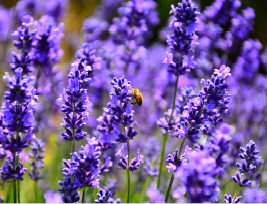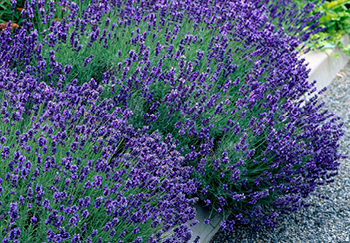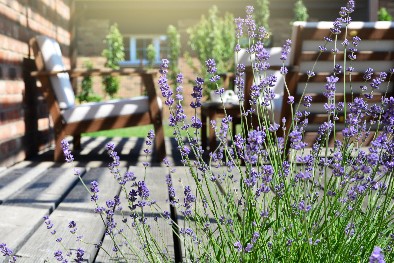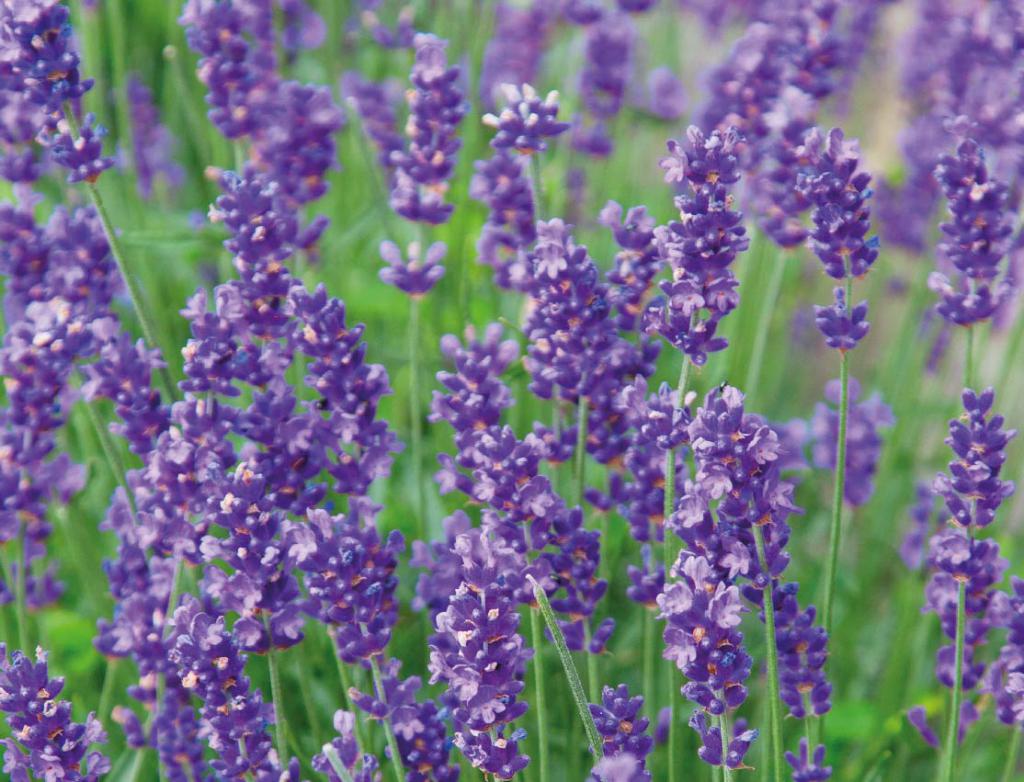Lavender Growing Guide
Lavender is prized above all else for its rich fragrance and one of the surest benefits of having this versatile shrub in your garden is the joy of rubbing a little between your hands and absorbing the aroma. Lavender is also surprisingly easy to grow and hardy enough to survive periods of drought, meaning so long as a few basic duties are attended to, you can maintain lavender in your garden for several years without too much effort. Lavender is native right across the old world from Asia to Europe and has been cultivated for centuries for its essential oil which has a variety of uses. Because of its ease of cultivation and ability to survive with no shelter and through periods of drought, Lavender has been a popular garden plant for almost as long, usually found growing in borders. Lavender fairs best in free-draining soil and in full sun. Lavender flowers are especially attractive to bees and other pollinating insects which, as well as improving the vitality of your local ecosystem, will bring some discernible buzz to your garden as well.

How to Grow Lavender
Planting
Lavender is best planted in April and May when the warm soil will encourage the growth of the cuttings. The young plants are vulnerable to rotting so lavender should never be planted in winter when the soil is cold and often waterlogged. Unsurprisingly, lavender requires a free-draining soil and as much sunlight as possible so is best suited to flower borders or herb gardens. Lavender can make for quite a voluminous shrub so can even form a low hedge around the edge of the garden. Although a tough plant, later on, lavender does require some initial care so make sure the roots do not sit in wet soil (plant in a mound or ridge) and water regularly for the first few weeks. Space plants about 90cm (3ft) apart or, if growing a hedge, reduce that spacing to about 30cm (1ft) in order to create the necessary density. If you like, lavender can be planted in containers. Make sure these are large (around 40cm (16in.)), have large drainage holes and contain a well-drained soil. It must be kept in mind that excess water retention is the enemy here, mix in some coarse grit if the soil is too thick.

Ongoing Care
As mentioned above, lavender will require regular watering in the first few weeks. Once the plant has grown in the grown in the ground, however, it will only in periods of exceptional drought (unlikely in this country!) require watering. Unless that is, you have planted your lavender in a container. These dry out much faster and will require some ongoing watering, but again be careful not to waterlog the soil. Lavender does not require feeding and, although deadheading can increase the number of blooms, it is no disaster to leave them in place. General, lavender’s hardiness will ensure you don’t need to worry much about it beyond the first few weeks, although when winter comes around it is important to make sure that the plant is sheltered from excessive rain and cold. Planting your lavender at the base of a wall should be sufficient to ensure this, and you can always move containers to a more sheltered location.

Pruning and Training
Again, there is a fairly limited amount to do to keep your lavender looking thick and compact throughout the year. About once a year should be sufficient. In late summer, at the end of the flowering season, it is worth removing any spent flower stalks and about an inch of leaf growth to prevent the plant from becoming too straggly. However, never cut back into the woody stems and lavender does not break new growth easily from old stems. After a few years, sadly, lavender will inevitably become over woody and straggly and there’s very little to be done about this in the long run. However, it’s always easy to replace older plants to maintain a neat look.

Lavender in Your Garden
A beautiful smelling shrub that will form an integral part of any garden display for several years. And with the ease of replacement and wide availability of cuttings, older and more scraggly looking lavender plants needn’t be a problem for very long. When caring for lavender in containers, a little extra watering is required but this way of growing the plant can make some colourful central displays if placed strategically. Furthermore, the extra effort in watering is made up for by the ease of protecting container-grown lavender from the winter scourges of frost and waterlogged soil – simply move the containers to a slightly more sheltered area. On the whole, however, lavender is a colourful, hardy, fragrant plant that makes for a fine addition to any garden. This coupled with its ease of growing and maintenance have made it one of the most popular choices amongst all gardeners, from the amateur upwards.

Useful Links
- Geranium Growing Guide (Article)
- Dianthus Growing Guide (Article)
- Fuschia Growing Guide (Article)
- Dahlia Growing Guide (Article)
- Shop online for bedding and patio plants






